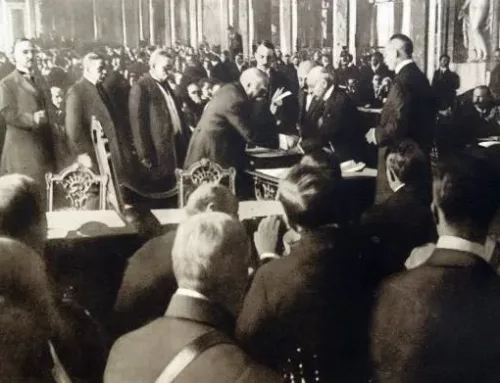WWI American Pilots Wanted A Great Fighter Plane. Instead, They Got The Nieuport 28.
Published: 11 February 2023
By John Guttman
via the HISTORYNET web site

Nieuport 28
In April 2022, Swedish restorer Mikael Carlson takes his newly completed Nieuport 28 up for its first flight since the 1970s. Slated for donation to the Collings Foundation’s American Heritage Museum, the fighter sports a unique, transitory color scheme based on 1st Lt. Douglas Campbell’s on April 14, 1918, when he became the first American-trained fighter pilot to score an aerial victory. (©Daniel Karlsson)
The Americans flying in World War I wanted the Spad XIII. They got the Nieuport 28 instead.
Near dawn on April 2, 2022, a vision from the past accelerated down a grass airstrip in rural Sweden and lifted smoothly off the ground. The French biplane, the world’s only flyable Nieuport 28, was making its first flight since the 1970s, following a lengthy restoration by Swedish pilot and vintage aircraft restorer Mikael Carlson. Built in France in 1918, the Nieuport—serial number 512—had not seen combat in World War I but it had served with the United States Army Air Service (USAS) after the Armistice and appeared in several Hollywood war films following its retirement from service. In 2019 its owner donated the venerable airplane to the Collings Foundation’s American Heritage Museum in Hudson, Massachusetts.
The airplane was shipped to Sweden for restoration and Carlson went to work. Overall, he found the Nieuport to be in excellent shape, and that included the original 160-hp Gnome Monosoupape 9N rotary engine. The cowling was not authentic and had to be replaced, part of the upper wing needed to be reconstructed and some other parts had to be refabricated and replaced. Carlson then had the entire airframe covered with authentic Irish linen. When it came time to choose a color scheme for the airplane, Carlson chose one that was both historic and unique: that of Nieuport N6164, which 1st Lt. Douglas Campbell was flying on April 14, 1918, when he scored the first aerial victory by an American-trained fighter pilot in the USAS in World War I.
And how did the vintage aircraft fly? “Put it this way,” Carlson said. “I can understand why the French gave the Nieuport 28 to the Americans and kept the better Spad XIII to themselves.”
One of the most elegant looking warplanes of its time, what was formally classified as the Nieuport 28.C1 (the “C” signifying chasseur, or fighter, and the “1” its single seat) first flew on June 14, 1917. Its biplane configuration marked an overdue departure from a series of sesquiplane (one and a half wing) fighters designed by Nieuport’s chief engineer, Gustave Delage, starting in 1914. Featuring a two-spar upper wing and a single-spar lower wing that served as a brace for the support cables, these Nieuport “V-strutters” handled well and provided their pilots with a superb downward view. By 1917, however, the sesquiplane layout was proving too fragile to accommodate more powerful engines or the second machine gun that was becoming standard. With that in mind, Delage returned to the proven format of a wire-braced biplane. Besides allowing a power upgrade to the 160-hp Gnome engine, it would also allow installation of twin .303-inch synchronized Vickers machine guns.
The French government was initially impressed enough with the new fighter to award a production contract, but then cancelled the order because the Aéronautique Militaire was fully committed to the Spad XIII, with its sturdier airframe and 220-hp Hispano-Suiza 8B geared V-8 engine. That’s when the U.S. Army inadvertently became the Nieuport 28’s savior. Although the Army also preferred the Spad XIII, the French intended to equip their own escadrilles first. Thatled the USAS to order 297 Nieuports as a stopgap measure until the Spads became available.
Read the entire article on the HISTORYNET web site here:
External Web Site Notice: This page contains information directly presented from an external source. The terms and conditions of this page may not be the same as those of this website. Click here to read the full disclaimer notice for external web sites. Thank you.



